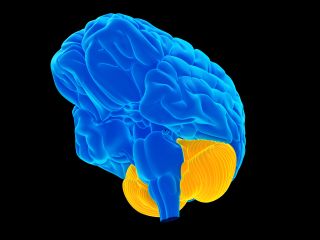The Complete Insight: What Therapists Know About Bullying
Understanding what therapists know about bullying is crucial. This guide explores the profound psychological impact of bullying and effective assessment strategies for clinicians.

Unmasking the Silent Epidemic: What Therapists Know About Bullying's True Impact
Bullying is far more than just a childhood rite of passage; it's a pervasive and often devastating experience with profound, long-lasting psychological consequences. For mental health professionals, understanding what therapists know about bullying is not just beneficial, but essential for effective client care. While public awareness campaigns are common, statistics reveal that a significant percentage of children still face bullying, highlighting a critical gap in identification and intervention. This guide delves into the hidden depths of bullying's impact, equipping therapists with the knowledge to recognize, assess, and support those affected.
Why is Bullying a Critical Concern for Mental Health Professionals?
Despite widespread anti-bullying initiatives, the issue remains startlingly prevalent. Recent data indicates that approximately 20% of students experience bullying, with similar numbers facing online harassment (CDC, 2024). This widespread occurrence means that many clients seeking therapy, whether children, adolescents, or adults, may carry unaddressed trauma from bullying experiences. Therapists know about the subtle ways past hurts can manifest, making pointed inquiry about bullying a non-negotiable part of comprehensive assessment.
In my own professional experience, reviewing countless psychological assessments reveals a recurring oversight: even when clients present with clear indicators or self-report bullying, it's frequently absent from their official records. This suggests a systemic blind spot. Given the severe potential outcomes, including links to psychosis development, asking about bullying should be as routine as inquiring about suicidal ideation. Documenting its presence or absence ensures a thorough evaluation and underscores its clinical significance.
What Are the Profound Psychological Impacts of Bullying?
Bullying, defined by Stanford researchers as “intentional, repeated, and harmful aggressive behaviors among peers,” is a global phenomenon with dire psychological fallout. The immediate effects can range from acute anxiety and depression to physical injuries. Tragically, in extreme cases, bullying has been linked to suicide, underscoring its devastating potential. The harrowing case of Phoebe Prince (2025), an Irish immigrant bullied to the point of taking her own life, serves as a stark reminder of these grim possibilities.
Beyond immediate distress, the psychological grip of bullying can extend far into the future, even long after the direct harassment ceases. Children who endure bullying may grapple with persistent depression, social anxiety, and even Post-Traumatic Stress Disorder (PTSD) in severe instances. Consider a quiet, academically bright student, 'Maya,' who suddenly developed severe stomach aches and began avoiding school. Initially dismissed as simple anxiety, careful questioning revealed she was being systematically excluded and ridiculed by a peer group, leading to profound social withdrawal and academic decline.
Further, emerging research highlights a chilling connection between childhood bullying and the development of psychosis. Dr. Michael Garrett (Greenebaum, 2024), a leading psychosis expert, notes a strong correlation in his clinical observations. Studies, including those cited by Harvard researchers, reveal that bullying can induce changes in brain function, specifically impacting glutamatergic neurotransmission, which is implicated in the liability for psychotic experiences during early adolescence (Okada et al., 2024). Another significant study found that individuals experiencing first-episode psychosis were twice as likely to report a history of bullying victimization compared to control groups (Trotta ets al., 2013). This critical insight into what therapists know about bullying's neurological impact underscores the need for early detection.
The scars of bullying aren't confined to childhood. Adults often carry these emotional wounds, impacting their self-esteem, relationships, and professional lives. 'David,' a successful professional, found himself consistently struggling with imposter syndrome and an inability to trust colleagues, despite his achievements. Through therapy, he traced these patterns back to relentless bullying in middle school, which left him feeling perpetually inadequate and wary of social dynamics. The belief of being an outcast, especially for those already predisposed to anxiety or depression, can become deeply ingrained. While therapy can offer pathways to healing, not everyone has access to or can engage with such support.
Indeed, research by Blanchflower & Bryson (2024) indicates that individuals with unaddressed bullying trauma face higher incidents of mental illness in adulthood, increased joblessness, and even higher mortality rates before age 55. This data definitively shows that time alone does not heal all wounds, reinforcing the urgent need for therapeutic intervention.
How Can Therapists Effectively Assess for Bullying?
Given that many instances of bullying go unreported, proactive assessment by therapists is paramount. Prevention through anti-bullying programs is ideal, but pointed inquiry and immediate intervention are often the most direct routes to help. Therapists know about the reluctance of victims to disclose their experiences, making direct and empathetic questioning crucial.
Therapists, educators, and other helpers should integrate questions about bullying into their standard intake and ongoing assessments. This applies whether the child is a potential victim or an initiator of bullying behavior. Making it a routine checklist item can preempt significant long-term psychological distress. Research suggests only about 20% of bullied children report it (National Center for Education Statistics, 2018), often due to fear of retaliation, shame, or simply because no one has explicitly asked them.
Key Indicators of Bullying Victimization:
- Behavioral Changes: Truancy, social withdrawal, sudden irritability, or uncharacteristic aggression.
- Academic Decline: Decreased school performance or loss of interest in school activities.
- Physical Signs: Unexplained bruises, torn clothing, or frequently "losing" belongings.
- Emotional Distress: Increased anxiety about school, appearing palpably fearful, or expressing hopelessness.
- Psychosomatic Symptoms: Frequent headaches, stomach aches, or other physical complaints without clear medical cause. (e.g., 'Sarah' developed chronic migraines every Sunday night, anticipating school).
Certain groups are disproportionately targeted, including females, children with disabilities, minorities, and newcomers to a school environment. Awareness of these vulnerability factors can guide more targeted assessment.

Tools like the Olweus Bullying Questionnaire (2007) can provide structured questions to help therapists objectively assess the severity and nature of bullying, offering a framework for sensitive inquiry. This helps ensure comprehensive data collection beyond general observations.
What Strategies Can Therapists Employ to Support Bullying Victims?
Once bullying is identified within the therapeutic setting, the therapist's role extends beyond individual counseling. Effective intervention involves a multi-faceted approach:
- Individual Psychotherapy: Help the child or adult process the emotional and psychological effects of bullying, such as anxiety, depression, trauma, and self-esteem issues. Techniques like CBT, DBT, or trauma-focused therapy can be highly effective.
- Skill Building: Teach coping mechanisms, assertiveness skills, and social-emotional intelligence to empower the client to navigate future social challenges.
- Parental Collaboration: Work closely with parents or guardians to educate them about the signs of bullying, discuss strategies for support at home, and encourage open communication with their child. This also includes guiding parents on how to advocate effectively within the school system.
- School Advocacy and Collaboration: With proper consent, therapists can collaborate with school personnel, including teachers, counselors, and administrators. This might involve sharing insights (anonymously if preferred by the client and family) to inform school-wide anti-bullying efforts or to address specific incidents. This ensures a coordinated approach to creating a safer environment.
- Safety Planning: Develop concrete strategies with the client and family to enhance physical and emotional safety, both at school and online. This might include identifying safe spaces, trusted adults, and reporting mechanisms.
By adopting these proactive and collaborative strategies, mental health professionals can significantly mitigate the devastating effects of bullying. This comprehensive approach reflects what therapists know about bullying's profound impact and their crucial role in fostering resilience and healing.
Key Takeaways for Therapists
- Bullying is alarmingly common and its psychological sequelae can be severe and long-lasting, impacting individuals from childhood into adulthood.
- Proactive and pointed assessment for bullying should be a standard practice in all clinical evaluations, regardless of the client's age.
- The consequences of bullying can extend to serious mental health conditions, including anxiety, depression, PTSD, and even a heightened risk for psychosis.
- Therapists have a critical role in not only treating the psychological effects but also in collaborating with families and schools to ensure comprehensive support and intervention.
- Utilizing structured assessment tools and being aware of common indicators and vulnerable populations can enhance early detection and effective response.
By integrating these insights into practice, mental health professionals can provide more holistic and impactful care, truly transforming lives affected by bullying.
About Ava Thompson
NASM-certified trainer and nutrition nerd who translates science into simple routines.
View all articles by Ava Thompson →Our content meets rigorous standards for accuracy, evidence-based research, and ethical guidelines. Learn more about our editorial process .
Get Weekly Insights
Join 10,000+ readers receiving actionable tips every Sunday.



